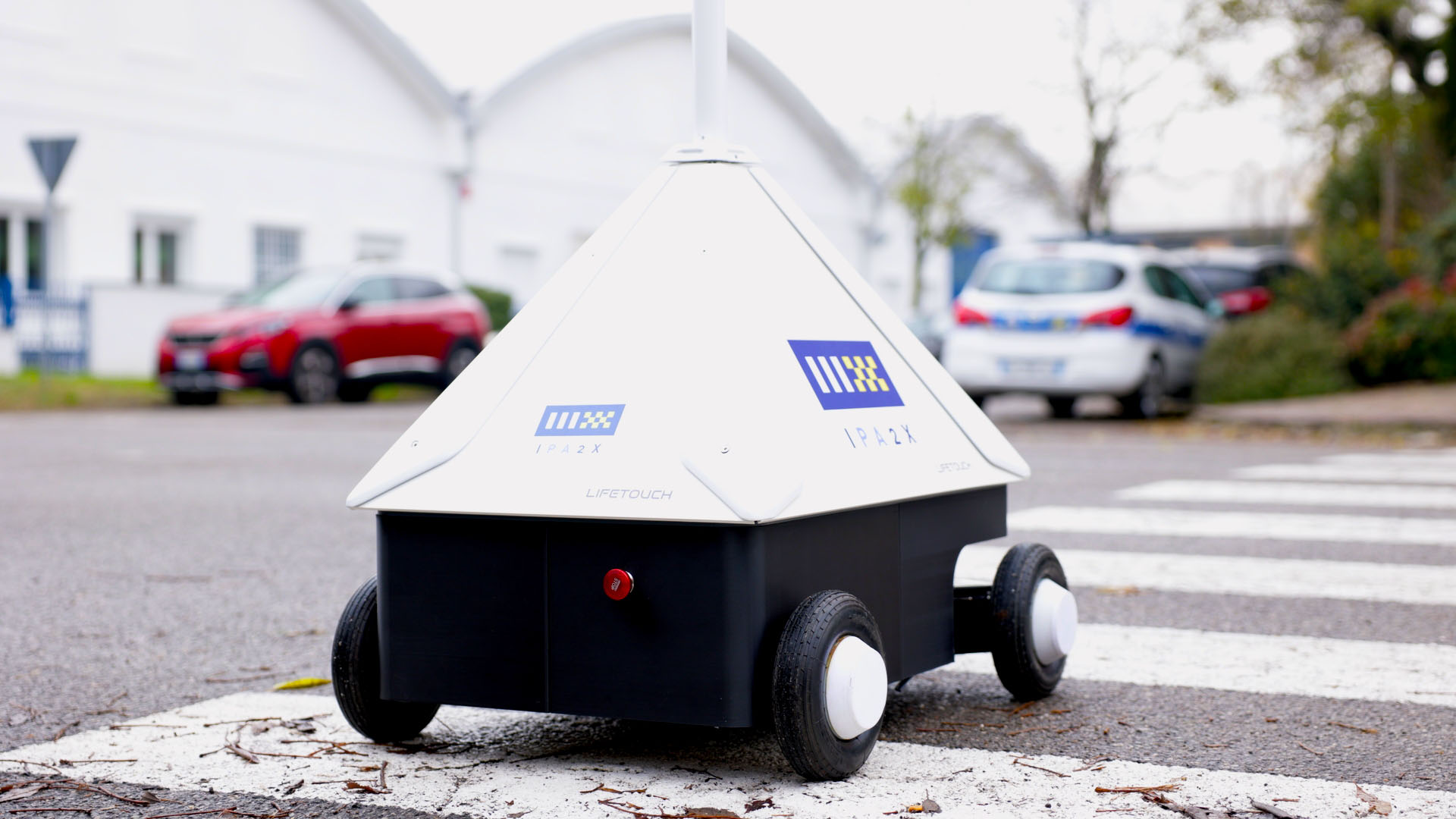SKODA

Czech car manufacturer is developing pedestrian assistance systems
The robot at the traffic light slowly enters the pedestrian crossing. It stops oncoming cars and gives the green light to pedestrians. A car's radiator grille gives pedestrians a similar signal. Science fiction? No, not that far into the future.
The robot rover called the IPA2X is designed to help children, the elderly and people with disabilities safely cross the road. Experts from the Institute of Informatics, Robotics and Cybernetics at the Czech Technical University of Prague (CIIRC), the Technical University of Munich and Škoda collaborated on the development of the smart assistant, focusing, among other things, on the car's new front signage panel .
The project, which received support from the European Institute of Innovation and Technology (EIT) Urban Mobility initiative, also includes several other autonomous driving companies, research institutes and technology manufacturers. Experiences and knowledge in the area of artificial intelligence and 5G mobile networks were transferred. The result is a robot over two meters tall that looks like a mobile traffic light.
“The robot will make its way to the middle of the crosswalk. Once you get there, it will show a green light and pedestrians will be able to cross. The robot constantly monitors its surroundings to detect when a car approaches an intersection. Its advantage is that sensors placed at a height of two meters or more allow it to see over a row of parked cars. That's why he goes out into the street when he sees it's safe”, explains Michal Sojka from the CIIRC.
The robot also displays pedestrian information and warnings for oncoming cars – it shows drivers a stop sign. It also sends a warning to the car itself, which is displayed as an animation on the infotainment screen. “A warning appears that there is a pedestrian crossing ahead where something is happening. After people cross the street, the robot returns to the sidewalk. The moment it reaches the curb, the warning on the dashboard disappears and the driver can continue on their way,” adds Michal Sojka. The robotic rover should also emit audio signals in later development versions.

Cars communicate with pedestrians...Another interesting part of the project – and an innovation specially developed by Škoda – is the signal grid at the front of the car that allows communication with the environment. It is very difficult to send clear and unambiguous warnings to pedestrians from a distance, so the developers came up with a replacement for the car's radiator grille. The grid has built-in LED strips that allow you to display pictograms and even entire animations.
“This is essentially a complete replacement for the backlit Crystal Face. We made a new body with LED strip holders. The LEDs are programmable and each can be controlled separately, allowing you to create animations. The final step was a light diffusing layer and a covering to ensure the mask could withstand the harshest weather conditions during testing,” explains Zdeněk Herda, specialist in HMI simulations and automated driving at Škoda Technical Development.
Here's the scenario: a car approaches a crosswalk and warns pedestrians that it has seen them well in advance. It stops and shows, for example, green arrows letting them know they can cross. When pedestrians cross and the car is about to move, it again displays the “Stop, exit crosswalk” sign. Another scenario is that a car approaching the intersection cannot stop for any reason – so it must send a clear signal: “Attention, I cannot stop, do not enter the intersection”.
Symbols tested include green arrows, a green human figure, the colors we are used to at traffic lights, a warning triangle or a red triangle with a cross. These are symbols that everyone understands. At the moment, the project is experimenting with different scenarios and possibilities that these technologies allow. As Zdeněk Herda explains, in the future there may also be static elements – for example, a traffic light at a crosswalk would track where people are in that area, how many there are and whether they are approaching the crosswalk or if they are already there, and send information to oncoming cars.
Tests in Italy and Slovenia...Experts from Škoda and the Czech Technical University also tested the communication of robots with cars. Tests took place last fall in three European cities. In Milan and Modena, the robot was tested near schools, while in Ljubljana the focus was on the elderly. In addition to increasing safety, the design has the added benefit of reducing noise and pollution and reducing costs, as it eliminates the need for people to participate in pedestrian crossings.
The development team received valuable feedback from Italian students. “We learned a lot of useful things from the children. They found it strange that the robot didn't speak, didn't have arms or moved very slowly. They gave us a lot of ideas on how to improve the robot,” he said. says Sojka.
Schoolchildren in other cities will soon be able to see robotic traffic lights. “The testing phase should end in 2024, with robots on the streets perhaps as early as 2025,” says project coordinator Andrea Bastoni from the Technical University of Munich.
Source: Auto magazin, Bosnia

Nenhum comentário:
Postar um comentário